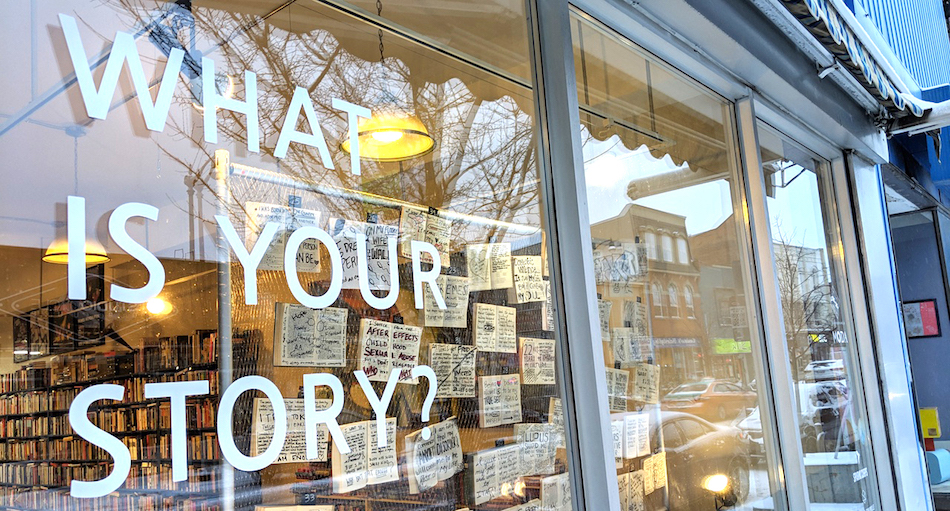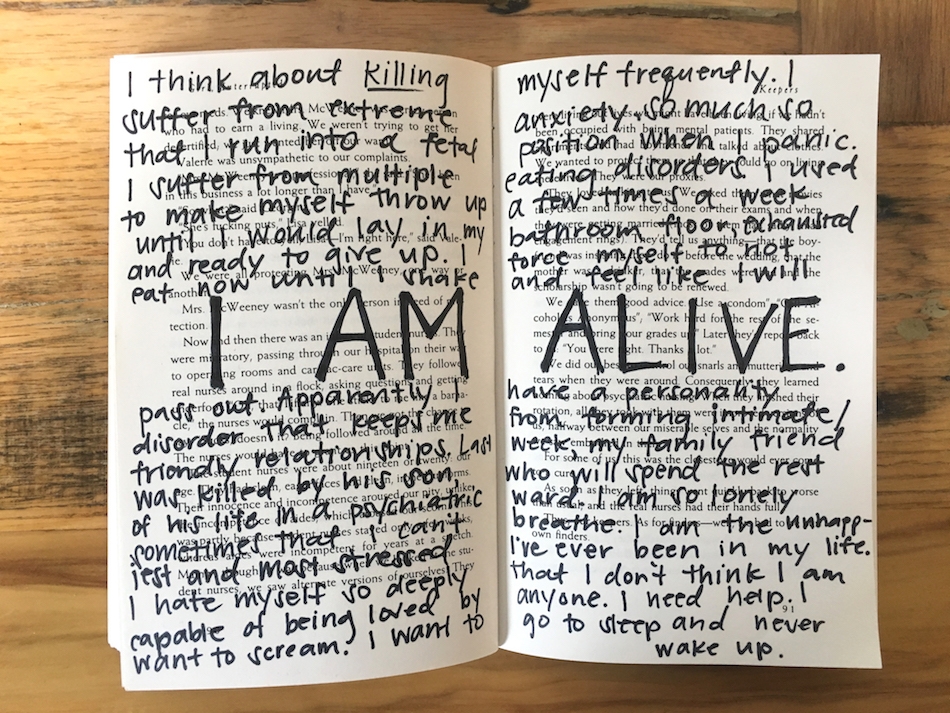
Sharing stories is one of the most – if not the most – innate forms of communication; the retelling of experiences and narratives as a means of inspiring thought-provoking perspectives, teaching life lessons and connecting people.
“Science has finally confirmed what we’ve long known to be true — we’re hardwired for stories,” Sujan Patel, growth marketer and entrepreneur, writes in the article, Nine companies that are killing it with brand-driven storytelling. “They lead to better understanding, trust, comprehension, receptivity and more. We teach important ideas to our children via fables and fairy tales. We share episodes from the lives of important religious and historical figures via dialogues and stories. We connect, engage and are moved…to tears, to laughter, to anger, to sympathy, to action.”
A recent design and social impact project highlights the power of human connection. Organizers collected untold, anonymous stories in Toronto and Atlanta, and wrote them into reclaimed, second-hand books; visitors of the art exhibit could then reply to these stories by sending a postcard. Titled What is your story?, the exhibit looks at the struggles and secrets hidden deep within ourselves and our peers, and how these unknown stories connect us more than we realize. Designed by Spark Corps and Orange Sparkle Ball, in collaboration with BooknBrunch, the interactive installation quickly became an outlet for untold stories.

“There are very few burdens greater than carrying the weight of an untold story. People constantly have trouble finding their voice and sharing their story for fear of being judged. Books are the silent storyteller,” the organizers explain. “This interaction makes the storyteller feel heard and responded to. The vulnerability of what people share under anonymity is astounding and powerful.”
The collection of books was put on display as part of DesignTO in January 2019, a city-wide cultural celebration of design in Toronto, and is now on exhibit in Atlanta. The installation is expected to travel to additional locations in Canada, the United States and Colombia in the future.
“Stories create community, enable us to see through the eyes of other people, and open us to the claims of others,” Peter Forbes, photographer and author, once famously said.
Life on the line is an art project that saw 100 posters take the place of typical subway advertisements from November 17, 2018, to January 6, 2019. Launched by Toronto-based not-for-profit organization Twentytwenty Arts, the pieces were created by artists who have been affected by mental health issues, either directly or through their loved ones, and aim to reflect their diverse experiences.
The 20 winning pieces – selected from roughly 350 submissions – vary in design and media, ranging from lithographs, digital works, screen prints, photography, oil paintings and collages.
“Art has an opportunity to communicate experiences that might be incommunicable,” Megan Kee, executive director for Twentytwenty Arts, told The Globe and Mail.
Displayed on Toronto Transit Commission’s Lines 1 and 2 subways for nearly two months, the prints are also available for purchase, with 80 percent of sales going toward the Canadian Mental Health Association Toronto.
In today’s fast-paced society immersed in digital technology, we’ve seen a return to creating simpler, authentic connections. Think classic board games, vinyl record players, Polaroid cameras, retro-inspired television shows, even print catalogues and direct mail pieces — what’s old is new again.
“The Internet constantly rewards us with convenience and instant gratification, making the human touch increasingly more scarce and coveted,” writes Celinne Da Costa in the article, Three reasons why brand storytelling is the future of marketing. “In this environment, businesses can no longer afford to be faceless entities. To survive, businesses need to connect with audiences, pull at their heartstrings, and engage with them on a much deeper level than seen before.”
While the article focuses on crafting and executing an effective brand marketing strategy, the bottom line – “humanity is becoming the new premium” – remains true. Effective storytelling will continue to evoke an emotional, memorable response.
“Your audience may forget what you say, but they will not forget how you made them feel,” Da Costa notes.
As Jimmy Neil Smith, founder and president emeritus of the International Storytelling Center in Jonesborough, Tenn., puts it: “We are all storytellers. We all live in a network of stories. There isn’t a stronger connection between people than storytelling.”
This editorial was originally published in the March 2019 issue of PrintAction, now available online.
Print this page
